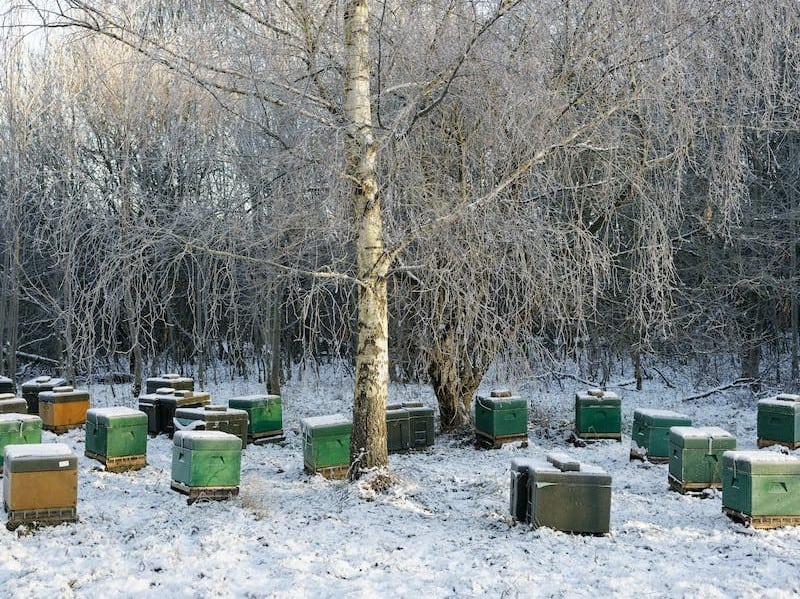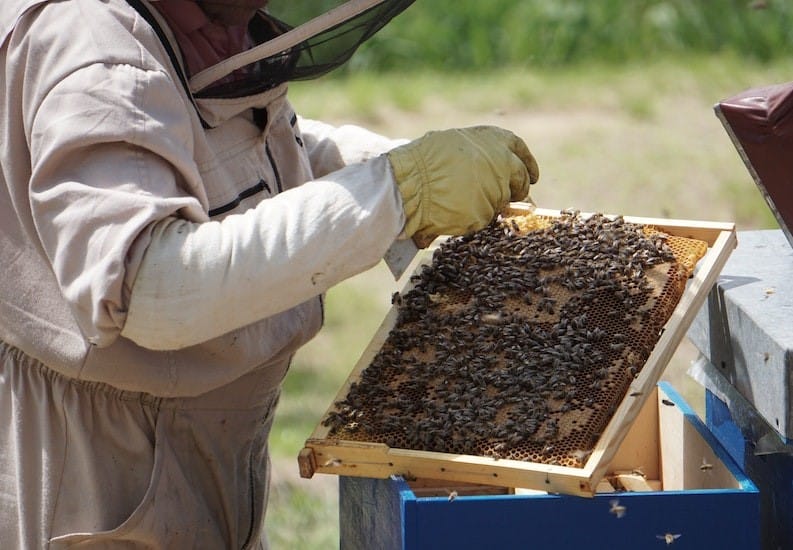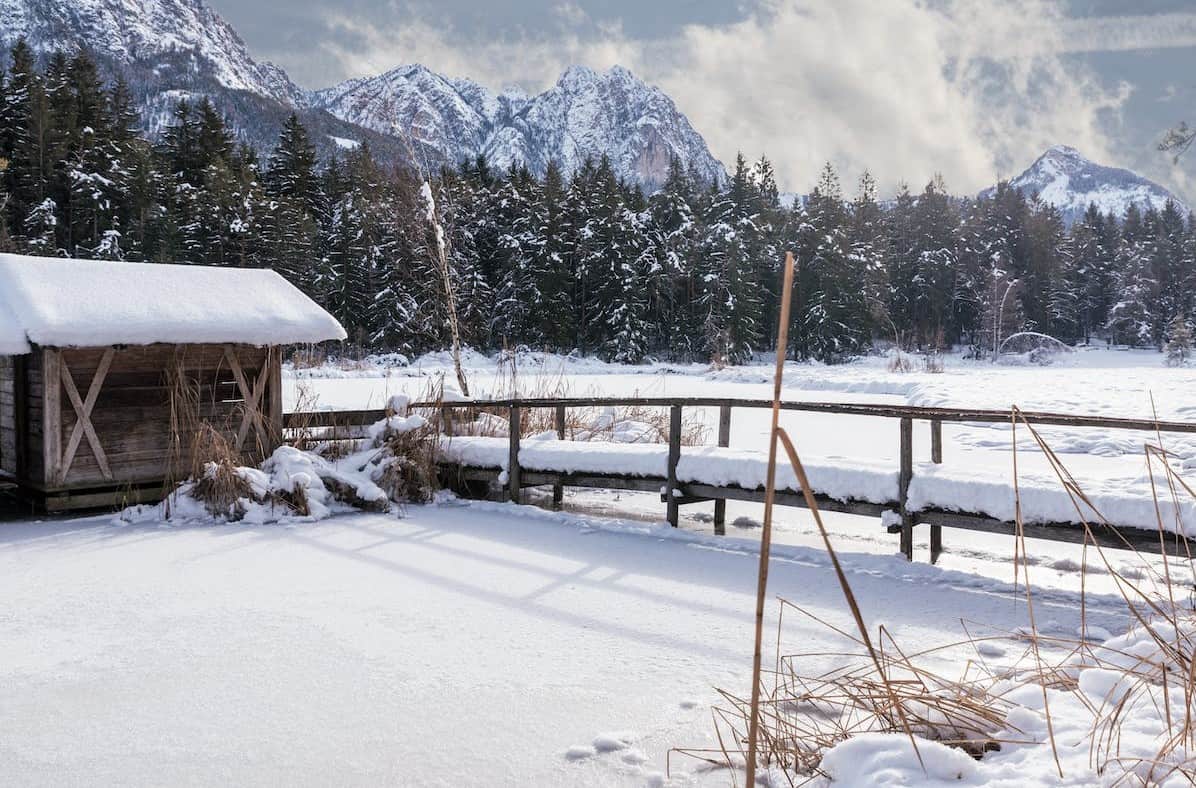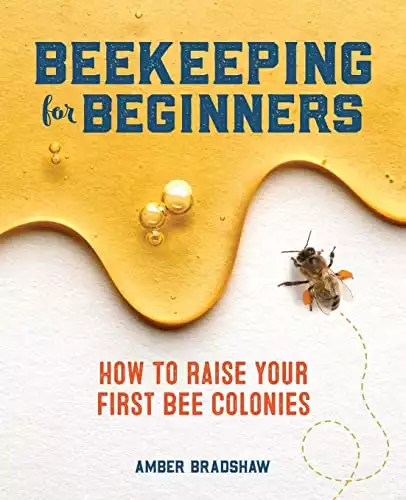When the bees settle in for the winter, there isn’t much for a beekeeper to do daily or weekly. Even though bees don’t hibernate, they stay indoors as we do. In the winter, what are beekeepers to do?
As winter approaches, the bees start forming a winter cluster to generate heat and stay warm. During this time, beekeepers have to prepare the hives.
Beekeepers check how much honey is in the hives. When there’s less, beekeepers prepare sugar water to sustain the honey bees and help them survive. But when the bees are warm and cozy in their winter cluster, what do beekeepers do?
What do Beekeepers do During the Winter?

On a regular basis, beekeepers monitor the hive entrances to ensure that snow and other materials do not clog the bee’s path. During better days in the winter when it’s not too cold, bees go out through the hive entrance to feed.
Winter gives a beekeeper time to catch up on forgotten chores and prepare for the next season. Here are five things a beekeeper could do during this “off” season.
Treat for Varroa Mites
One of the important tasks of many beekeepers is to provide treatment to honey bees and the beehive.
In a previous post about varroa treatments, we highlighted the importance of treating your bees for varroa early in the fall to give your winter bees the best chance of survival. That still stands, but we’d like to add more information.
Varroa mites need bee brood to reproduce, finding those ideal conditions in the capped brood. While they hide in the cell with a pupating bee, they are safe from the effects of most treatments.
That’s why, when we treat early in the fall, a small number of mites may survive the exercise and continue to reproduce until the queen stops laying altogether.
As the capped brood emerges in the fall, the number of mites grows inside the hive, wreaking havoc on your new colonies. That’s why some beekeepers will also treat their hives during the broodless season in winter.
The preferred treatment in the winter is Oxalic acid, which can either be dribbled on the bees or sublimated by heating the crystals, which turn into vapor. As long as the ambient temperature is above 3°C/37°F, you can do either.
Beekeepers are more prone, though, to using oxalic acid vaporizers like
 this one
this one
- Easy to use. Fast heating
- Improved design for comfortable use.
- Durable and powerful, made from top-quality materials.

How can you tell when the colony is broodless?
Since we encourage you to avoid opening the hive in the winter, you could use an infrared or thermal camera. This way, outside temperature could not seep in. The bees stay warm despite the cold weather of the winter season.
When brood is present, the winter cluster has to keep the brood at a toasty 94-98°F (34 – 36°C), whereas the winter cluster temperature is considerably lower, 64.4 – 84°F(18 – 29°C) when the brood is absent.
Alternatively, open your honey bee hive on a day when the weather is friendly, the type of weather that allows them to take a cleansing flight, and quickly check the middle frames for brood. It shouldn’t take you more than a couple of minutes.
With an efficacy level of over 90%, treating your colonies in the winter gives them a healthy start in the spring.

Order Bees and Queens
When early spring rolls around in April, beekeepers who sell package bees and nucs already have their bees ready to dispatch.
They received those orders two to three months in advance to get these packages ready. That’s why the window for ordering your package bees is between January and February.
Around that time, the queen bee starts to lay more eggs, ensuring the colony has the bee power and enough worker bees needed to forage when the spring blossoms appear.
In addition to putting in your order for your bees, you need to stock up on supplies, such as sugar. Packaged bees often need to be fed until they have drawn out some comb and started foraging.
Unlike a natural swarm, which loads up on enough honey and food stores before they either split from an existing colony or abscond from a beehive, package bees are forced out of the hive by beekeepers without an eviction notice. These honey bees are essentially unprepared for their migration and need a little help to get established. So, stock up on sugar for any emergency feeding that you might need. Having a hive ready is also a good idea.
You may need to treat them for varroa as well. Doing so before the queen starts to lay her eggs gives them the best chance for survival. Getting all these things in place before springtime will make your work easier.

Equipment builds and repairs
Winter gives beekeepers the time to inspect every piece of equipment while the winter bees are safe in the hive away from the cold.
Most hives are pretty sturdy and will serve you for years before they need repair, but there’s often a project or two to undertake before the season begins.
Some hives may need a coat of paint, while some frames may need to be replaced or wired. Perhaps you need an extra box to help with feeding the honey bees or a bee escape board you’ve been meaning to make.
You may also find a dead-out in the winter. The hive with dead bees must be cleaned and set up for the next colony.
Remember to freeze the frames to destroy small hive beetles and wax moth eggs.
Let’s not forget those wax cappings you collected in the summer, promising yourself you’ll render the wax the minute you get a chance. Here’s your chance.
Having your wax can help you set up starter strips for your frames, especially if you want to try foundationless beekeeping.
Catch Up on Your Reading
Many of the classic beekeeping books are a necessity. Although reading is an advisable prerequisite to beekeeping, it’s easy to get overwhelmed with theory.
Reading valuable reference books during the winter break helps you understand what happened during your beekeeping year and what to expect in the next season.
We highlighted some of our all-time favorite beekeeping books in a previous post, but I’ll add two more to the list.
The Mind of a Bee by Lars Chittka
$18.80
See on Amazon
We earn a commission if you make a purchase, at no additional cost to you.
07/27/2024 01:58 am GMT
This book gives you a unique perspective on the world as a bee. Both newbies and expert beekeepers find this book insightful. Despite a few complaints about the layout and font size, the book’s content is fascinating. It is also available as an audiobook if you would rather listen to it instead.
Beekeeping for Beginners by Amber Bradshaw
$12.99
See on Amazon
We earn a commission if you make a purchase, at no additional cost to you.
07/26/2024 09:07 pm GMT
Both novice and seasoned beekeepers are raving about this book, published in 2019. Even though beginner books cover the same topics, there are different approaches to any problem. Authors will propose various techniques, so no two books are identical.
You can also read bee magazines, such as the American Bee Journal or Bee Culture Magazine, for beekeeping matters in America. Across the pond, you can enjoy the Bee-Craft Magazine and Bee Farmer magazine for beekeepers in the U.K.
The great thing about magazines is you get the latest in news and research about matters such as varroa and general bee health, and you can find out about upcoming events.

If you are more of a listener than a reader, how about podcasts?
Two Bees in a Podcast is a blend of scientific research and beekeeping management hosted by the University of Florida. In addition to guest speakers who are researchers and beekeepers with decades of experience, they tackle common beekeeping problems.
The Beekeeping Today podcast from Bee Culture Magazine is another valuable resource you can listen to as you do your chores. It is hosted by Kim Flottum, a respected name and author in the beekeeping industry.
Exchange Gifts
Regardless of your belief system, the winter months are the holiday season. It is a great time to get your mentor a gift and for your loved ones to get you one.
From books to gadgets like thermal cameras and beehive scales, there are various options for the beekeeper. You can start hinting at what your tool kit is missing, maybe an extra hive tool or a convenient, easy-to-carry tool kit.
It could be something as simple as sugar to help feed some of your weaker colonies. Or a bottle of your stored honey would also be greatly appreciated.
Winter Is a Low Action Time, Not a No-Action Time
Aside from checking in on your honey bees to confirm they have enough food (especially in late winter), these five activities will help you get energized for the spring.
While your honey bees hunker down for the winter months, you have time to prepare for the bee season when spring and summer come. By that time, your hive and bees that both survived the cold winter would be more than ready to start doing what they do best.
Do you have any tips on other things beekeepers can do in the winter? Let us know in the comment section below. We would love to hear from you.


